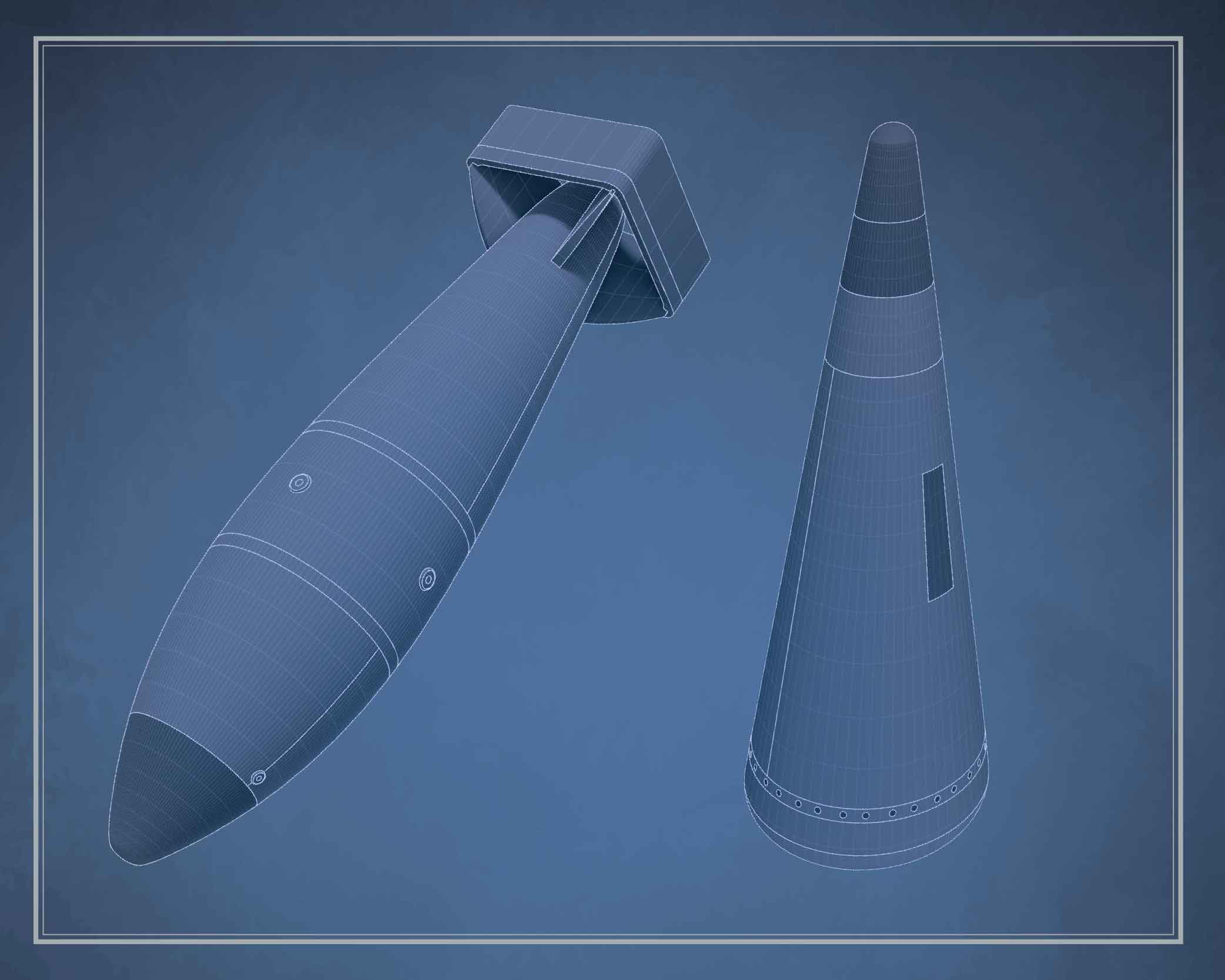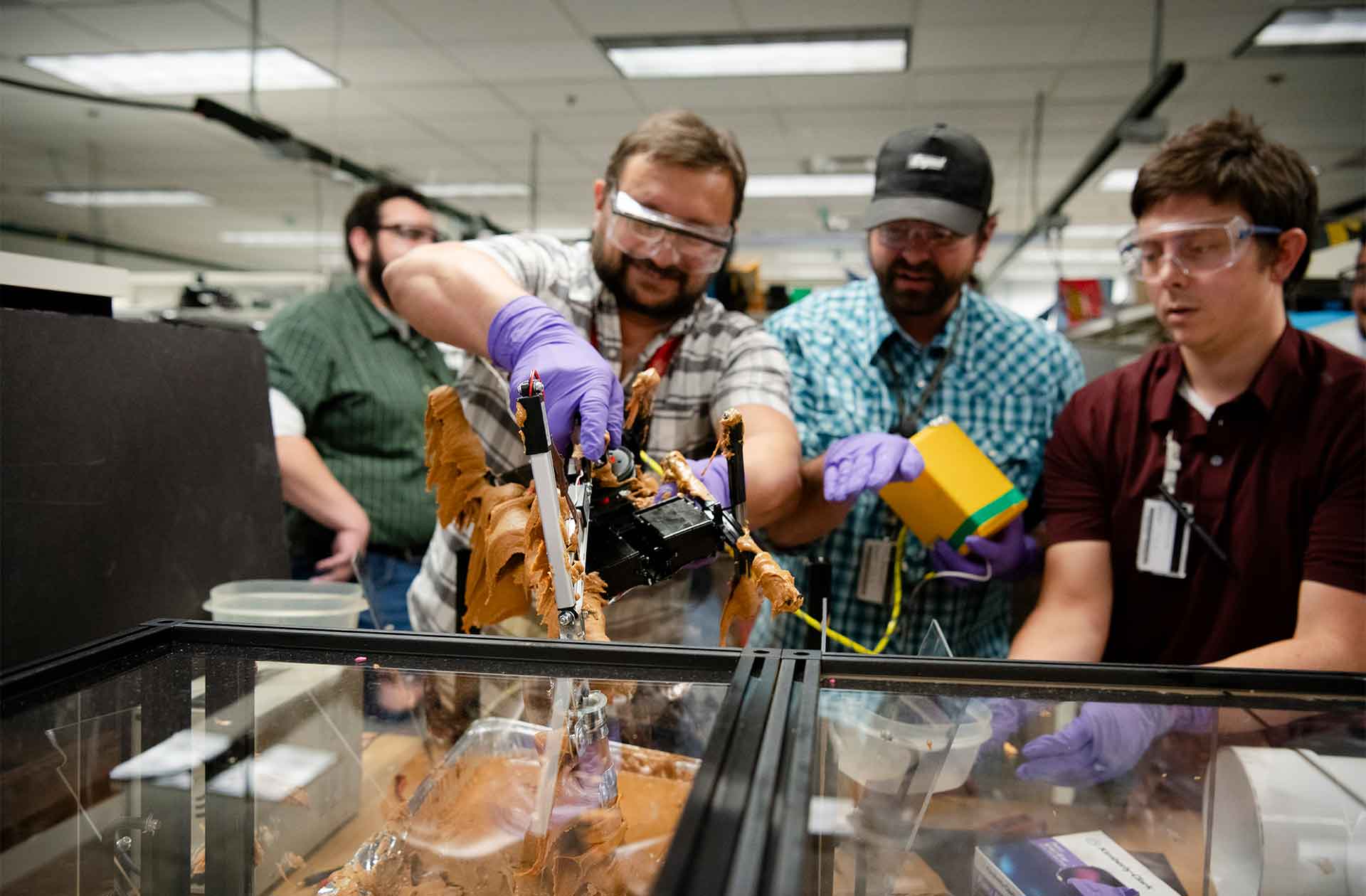Up, up, and away
Flight tests offer real-life weapons performance insight.
- Jill Gibson, Communications specialist

“Flight tests are where it all comes together,” says Brian Olsen, the W78 warhead manager at Los Alamos National Laboratory. Olsen, who oversees and manages the Los Alamos–designed and –maintained W78 system, has supported several full-scale flight tests for the warhead. He describes the tests as “the culmination of the design, build, and integration of our nuclear warheads.”
During what are called stockpile flight tests, joint test assemblies, or JTAs, the military launches a mock-nuclear weapon on a real delivery system: an intercontinental ballistic missile (ICBM), a submarine-launched ballistic missile (SLBM), or an airplane. JTAs are used to qualify the performance of the missile or plane together with the warhead or the bomb. The mock weapons used in these tests do not contain any material that could cause a nuclear detonation, although they resemble actual weapons in every other way.
“JTAs allow us to test in real environments which gives us confidence in the systems we qualify and assess,” Olsen says. “They also serve as a demonstration of the United States’ capability to our citizens, allies, and adversaries.”
The term ‘joint’ in JTA refers to the collaboration between the branches of the U.S. military and the Department of Energy’s National Nuclear Security Administration, of which the national labs, including Los Alamos, are a part. Military personnel oversee the tests with Los Alamos engineers supporting and observing.
JTAs qualify (or requalify in the case of updates or changes) that the nuclear weapons delivery platform and weapon will perform together as expected in real life conditions. “We conducted 30 flight tests to qualify the B61-12,” says Don Quintana, former acting associate Laboratory director for Weapons Engineering. “Low altitude, high altitude… all these different permutations to make sure everything is behaving correctly during flights.”
Currently, Los Alamos is responsible for maintaining the four weapons systems that the Lab designed (the B61, W76, W78, and W88), and each of these systems has a JTA program. Every condition a weapons system could encounter must be tested. “We have to conduct flight tests using different airplanes,” Quintana says, noting that the B61 was tested on seven different deployment platforms. “We look at how everything impacts the weapon—telemetry, acceleration, pressure, temperatures.”
JTAs are tested from different locations depending on the weapons delivery system. Vandenberg Space Force Base in California is used for ICMB tests carrying the W78 and W87. The missiles are launched from underground silos and land in a designated area in the Pacific Ocean, near the Kwajalein Atoll called the Pacific Test Range. The U.S. Navy tests the W76 and the W88 submarine-launched missiles in locations including the Pacific Test Range and the Eastern Test Range (which runs from Cape Canaveral in Florida into the South Atlantic). The B61 gravity bomb is tested at the Tonopah Test Range in Nevada, where the flat terrain and the remote and restricted area provides the location for engineers to conduct weapon tests.
Olsen says the W78 undergoes two to three flight tests each year, and the data from the tests provides new information on system performance. “Plus, systems continue to age, so we have to assess these changes and take advantage of opportunities to understand margin and design factors,” he says.
JTAs don’t just qualify or requalify weapons systems, they also assist with weapons design. “We are deploying in a real environment so we can collect data,” Quintana explains. “That data feeds back into future designs providing all the considerations that we need to design to.”
Quintana notes that flight tests are planned years in advance. “We’ve already scheduled flight tests for the W93, and we’re still designing it," he says. “It’s scheduled to have 11 flight tests. The first is set to take place in about two years.” (The W93 is a new U.S. nuclear warhead the Lab is designing for submarine-launched ballistic missiles.)
Regardless of which system is being tested, all these tests have a few things in common—they are expensive to conduct, they require a great deal of coordination, and they take a long time to plan. That’s why Los Alamos scientists and engineers are also embracing opportunities to conduct smaller-scale, suborbital flight tests for research and development.
In the past few years, the Lab’s Stockpile Responsiveness Program (SRP) has partnered with commercial rocket companies to begin Responsive Flight Testing (ReDX). These launches take place in southern New Mexico, typically at Spaceport America or White Sands Missile Range.
“The ReDX flights bridge the gap between environmental ground testing of weapons and components and the JTAs,” says Nate Sanchez, director of the Engineering and Technology Maturation program. Sanchez says the Lab identified this critical need for low-cost, high-cadence flight testing and began conducting tests in 2021. Los Alamos has launched five successful ReDX flights as of May 2025. Because the Lab works with commercial rocket companies, these flights are a fraction of the cost of the JTAs.
ReDX flights also have a much faster turnaround than JTAs. They can go from concept to flight in less than a year. “The day we launch a flight is the day we get data,” Sanchez says. “This provides a feedback loop as we develop new technologies and prototypes.”
Sanchez adds that the greatly reduced cost and higher frequency of these flights leads to increased risk tolerance. “ReDX flights allow us to work out the kinks and bring new capabilities to the forefront,” he says. “They fill the spot between environmental ground tests and full-scale qualification JTAs. We need all three.”
Sanchez adds that the Lab is continuing to develop and increase its ReDX flight testing capabilities. “These flights are meeting a significant need when it comes to developing and testing new prototypes and technologies,” Sanchez says. “It allows us to push the envelope, which is essential given the current geopolitical situation.” ★








